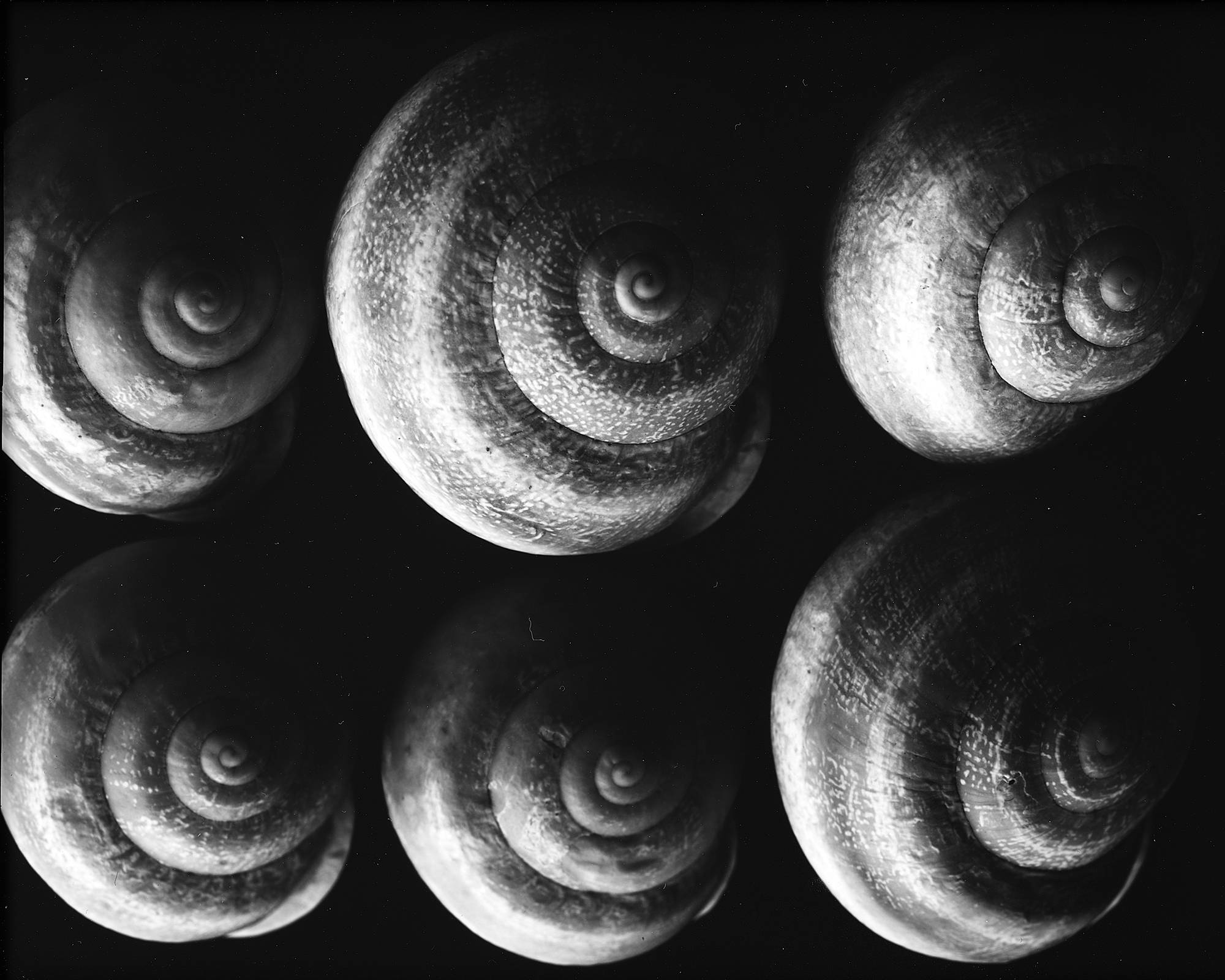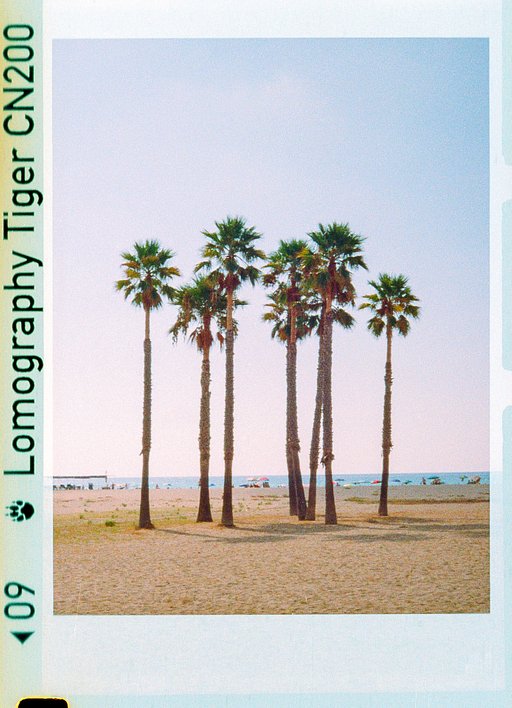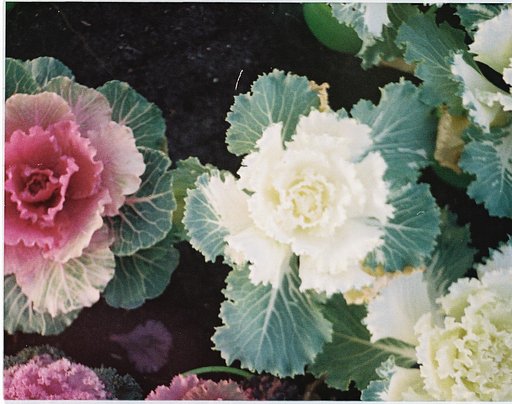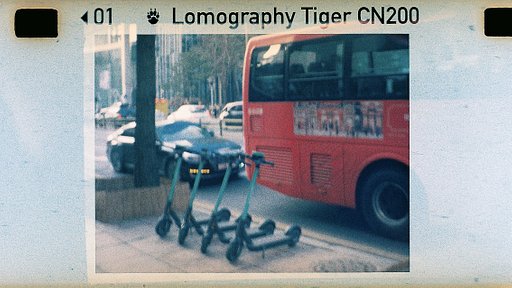My Large Format Love Story
14 39 Share TweetA few months ago I wandered through the Wukesong camera market in Beijing looking to buy a couple of rolls of Ektachrome for a trip to Spain. Any photography enthusiast who puts a foot into Wukesong will love it, it is China’s largest 2nd hand photography gear market filled with rows after rows of little individual stores in which you can find pretty much everything your analogue heart desires. From expired Lucky film to Hasselblads and Kievs, all kinds of rangefinders, SLRs, shops filled to the roof with vintage lenses, filters, chemicals, lights, hell even an Arri Alexa Mini if you fancy ̶ ̶ you get the picture. If you have time and the nerves to find and haggle for it, chances are you’ll get what you were looking for, or maybe the same thing that happened to me that day will happen to you...
I approached my usual go-to shop to buy film when I saw a beautiful, mint condition Fuji GW690 on a shelf, needless to say that Fuji has always been very high up on my wishlist. It was almost new. It had a red strap and looked amazing. An invisible force had me stray off my path and pull me into the shop. A whole world of other gems presented themselves to me. I saw a Nikon F3 Titanium special edition, a light meter prism for my Kiev 88, A Bessa R2A with a 40mm 1.4 Nokton lens and such beauties. Overwhelmed by a GAS attack, I only after awhile noticed that there’s a whole shelf of ‘Chamonix’ cameras and accessories in the back. It turns out the name is misleading and has nothing to do with the French Alps as the shopkeeper introduced the brand to me, they are large format cameras created by a veteran photographer in Shenzhen. Well crafted, lightweight due to a carbon fiber base, a wooden frame and all of that to an affordable price tag, I was pretty much in love right then. So it did happen, I did not even buy the 35mm films but exited the market with a basic Chamonix large format kit, smiling like a child in a candy store. I got myself this lovely thing:
Chamonix 4×5 view camera
Rodenstock Sironar-N 150mm f5.6 lens
Toyo Film Holders 2x
Box of Shanghai GP3 100
Jobo 4×5 developer drum
The spark was always there, but now it ignited into a huge napalm explosion. I had no idea what I was doing, just winging it all and setting up the camera a few times, looking at the Beijing skyline through the glorious 4×5 size ground glass with a t-shirt over my head, it was already exciting. A few online tutorials later I was loading my film holders like a boss, set up the camera within minutes, and was ready to tackle anything. I left to Europe the next morning and within a couple of hours, took my first ever shot on the Chamonix on the cheap Shanghai GP3 100 film. I shot with a 1:2.39 mask, coming from film I always loved that format, doesn’t make much sense though as you can just crop the image later on if you wanted. I set my exposure with the LightMeterW app on my phone. Not the cleanest job I done, some dust, some fingerprints on it but I can tell you despite that, it feels amazing to hold your first LF negative in your hands, the negative itself has so much detail and looks like a piece of art.
People will tell you that large format is complicated, that it’s hard and a pain to use, that you need a master’s degree in light metering and that it takes forever to set it up and so on. Don’t listen, don’t be intimidated by it for a second. Also don’t be discouraged by the rather monotone and serious sounding LF photographers on blogs and Youtube that show you how to do everything painstakingly detailed. In truth it is much fun and if you begin by initially choosing a rather forgiving film stock it is quite easy to get beautiful results. The process is obviously slower than working on 35mm but the possibilities are boundless. It is actually a truly great experimental camera! I will elaborate on that and give you a whole array of examples a bit further down.
To keep everything under control regarding costs, I believe that developing the negatives yourself is rather crucial for LF. I developed my first black and white pictures with the Ars Imago Monobath, a monobath developer that gives you a finished negative within eight minutes at room temperature in one single step. It's very forgiving and also quite cheap, it doesn’t get much easier than that. Nowadays I switched to the Ars Imago FD developer with even better results and for 15 USD I can develop more than two hundred negatives ̶ ̶ I call this great value for money! The C41/E6 I develop with a standard Tetenal Colortec kit which you can easily find online.
So what can you do with a large format camera and why would it be exciting to an experimental photography enthusiast? Isn’t this supposed to be something for serious old men who shoot mountains at sunset? Well, it can do it all. I start with a quick overview on lenses:
A shall we call it ‘standard’ 150mm LF lens can usually be two or even three lenses in one. First, there’s the 150mm focal length (horizontal FOV equivalent of around 47mm in 35mm format). Then even if it’s not classified as a convertible lens, by simply taking off the rear element of my 150mm (Rodenstock you take off the rear, some Fujinons or Schneider you take off the front) it turns it into a 450mm (horizontal FOV equivalent of around 141mm in 35mm format), it does loose a bit of light in the process, I measured mine at f11 without the rear. It will also have quite a bit of optical aberration, some softness towards the edges of the frame but sometimes this might even work towards you as a great portrait lens or for dreamy landscapes. I shot this photo of a red tree without the rear element:
With the 150mm, the scene was disturbed by a wooden bridge to the left and a few picnickers to the right, but with the 450mm option I could easily single out the red tree and get the symmetrical landscape I wanted. You can clearly see how the sharpness drops off towards the edges but I find it somewhat pretty.
Then there’s also the lovely fact that a 150mm lens becomes a 1:1 macro lens just by extending the bellows. With the negative size of 4×5 this is pretty amazing, imagine you can still crop heaps, you can basically capture someone’s eyeball in amazing detail. Pretty nifty little things those LF lenses and great for some macro shots or tabletop photography, basically there’s always the framing one wants as there is not really a restriction on minimal focusing distance.

And the depths of the internet as well as flee markets are fairly saturated with large format lenses. I bought a second lens for 25USD at a local flee market, a 90mm Yamasaki Congo f6.3 (horizontal FOV equivalent of around 25mm in 35mm format). Got to love that name! These lenses don’t have a great reputation but I have yet to discover why. I love it very much since it operates flawlessly and these two lenses literally cover all of my LF shooting needs so far. This was my first Yamasaki Congo shot on a hike last month:

Something else that makes experimental photography convenient and fun in more than one way is the fact that LF works with sheet film holders. A huge advantage and something that I love very much is to have the option of shooting a Kodak Ektar, then maybe a Shanghai GP3 and then maybe a Fuji Velvia 100F without the commitment of having to go through a roll of 36 photos of each emulsion. Redscale? Don’t even mention it, just put the negative in the holder upside down, done.
Double exposures and in-camera collages? Of course, as many exposures on one frame as you want. At the moment I work on a project of making in-camera collages, basically chosing the object I want to have and placing the camera in a way that most of the image except my object is covered with dark foreground so that only my object is properly exposed. I then put a piece of masking tape onto the ground glass to remind me which part of the negative I have already exposed and move on to the next shot. It’s like a Splitzer on steroids. I will update my LomoHome (@montagu) with the first collages I made in a few days when I’m back from my holidays and had a chance to scan them.
How about what I call a cross-emulsion contact print? Basically what I played with was loading an unexposed direct positive paper or any negative in the sheet holder and then loading a developed 4×5 negative or slide on top of it, then expose! I was in for a surprise and loved the results very much. You will end up with an interesting mix of positive and negative on your final image.
Mix this up with color negative, slide, positive and negative papers and some interesting results with a twist on the ‘normal’ double exposures are sure. These two shots were made with this technique, the first one being a pretty overexposed, developed Velvia slide of grass overlaid on a nude shot on Provia, the other one being a developed Kodak Ektar negative on top of an Imago Positive Paper. Basically you end up creating a sort of contact print on top of your new image, in-camera:
Paint or scratch on negatives? A 4×5 negative is so big, it’s a pleasure to draw on it without having to use a loupe. Color it, scratch it, put finger prints, or all of it together. Whatever your experimental heart desires. I was alone at home and bored, shot a self portrait that was out of focus. Well, I started to play around with it, first with a sharpie just tracing lines and then went all crazy on it with a screwdriver. Not my best work but you can see there’s some potential here.
Making filters and masks? Yes! Every part of the camera is very easily accessible, The front of the lens naturally, but also the rear element, the gate in front of the ground glass, the space the negative occupies, on top of the negative inside the sheet film holder and so on ̶ ̶ there are endless options on making masks and filters which I have yet to discover.
And last but not least, something I need to add. A large format camera is an absolutely amazing tool for any pictorialist ideas. Very soon after you start using a 4×5, it shapes a sort of mindset, pushing you towards creating THE landscape, THE portrait, THE city shot, THE tree you always wanted to capture perfectly. Especially because it takes time, because it’s large and every shot is rather expensive, it drives you to pay extra attention and thoroughly prepare your shot. This is all personally speaking of course, but working on a large format camera inspires me to do that. It boosts my discipline, knowing what I want and paying attention to the details, measuring the light carefully, making notes of everything, waiting patiently and then 'click', get that perfect picture that will hopefully make me happy for a long time. Listen to me, I already sound like an old man taking pictures of mountains at sunset! This is a picture of my hometown Basel that I always wanted and I tried to combine the old and the new Basel in one:
As some of you might have already seen, I am working on my ‘Diagonal Compositions’ sun trails lately, part of the series is in my LomoHome @montagu. I could probably have done this series on many formats, but the LF camera was an ideal choice for this. It’s small things that make a huge difference. The lens has a T-Shutter mode (one click to open the shutter and one click to close the shutter), eliminating the accidental closure of the shutter in case the pressure of the remote lets go, when the battery dies or weird things happen like the Hasselblad Xpan 1 that on bulb mode only shoots for a maximum of 30 seconds. On top of that, most LF lenses equipped with an aperture that stops down to f45 or f64 which in my case is necessary to get a strong definition of the sun trail and not fill the frame with too much stray light. And sounding like a broken record, when every exposure of your project takes two to four hours, it is good to be able to develop the images pretty soon after taking them instead of having to shoot 18 days of sunsets and sunrises filling up a 36 exposure film only to realize the exposure was completely off.
This was my large format love story. I am confident that you can feel the genuine love and excitement I have for these cameras. Not even four months ago I have never even touched a LF camera, nowadays it is my most used tool.
I am sure there are still way more options to explore for all the experimenters out there, but this should get you on speed about the most common tips and tricks that I can share about my 4×5. I hope you are inspired by this little tipster. Thank you for reading it and let me know if you have any questions. Also add any ideas or experiences you had regarding the additional use of a LF camera in the comments!
작성자 Montague Fendt 작성일 2017-11-08 카테고리 #gear #large-format #large-format-photography #chamonix-4x5-view-camera















14 덧글